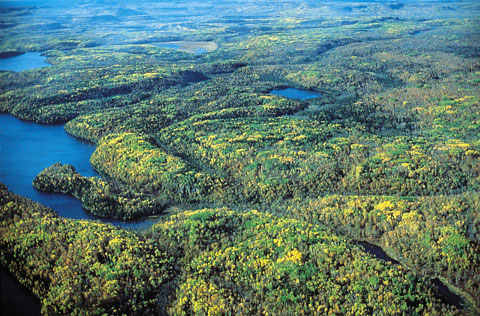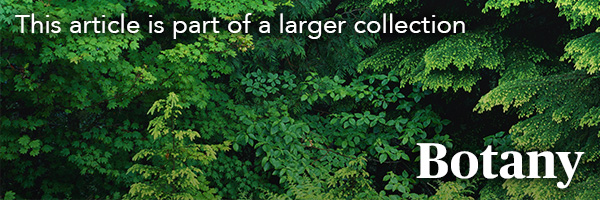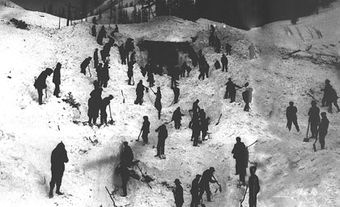Subzones
Bordered to the north by treeless arctic tundra and to the south by temperate forest or grassland, the zone includes three ecologically distinct subzones: the northern boreal woodland, the main boreal forest and the southern boreal forest. The northern woodland is characterized by widely spaced coniferous trees, hardy low shrubs and sun-loving lichens. The main boreal forest includes closely spaced evergreen and deciduous trees, as well as shade-tolerant shrubs with herbs and feathermoss carpets beneath them. Finally, the southern part of the region is similar to the main forest but contains the occasional temperate deciduous tree and other plant species. The evergreen trees that dominate the region are black and white spruce, jack and lodgepole pine, and balsam fir, while the deciduous trees include American larch, paper birch, trembling aspen and balsam poplar.
There are also two transitional subzones: hemi-arctic forest tundra — a mosaic of taiga and tundra vegetation along the northern margin — and mosaics of boreal and temperate vegetation along the southern margin. This southern subzone is defined by hemi-boreal aspen parkland in the west and northern conifer-hardwood forest in the east.
Topography
Until 12,000 years ago, most of today’s boreal zone was covered by glaciers. Because of this, much of the region’s topography and surficial geology results from glaciation, and most of its soils are young compared with those in unglaciated areas. In terms of the forest’s boundaries, global warming and cooling have historically caused the area’s north–south limits to shift up or down depending on temperature.
Wetlands
Treed and treeless wetland networks occur in poorly drained areas. They are usually composed of fens, acidic peat bogs, and nutrient-rich marshes underlain by varying amounts of organic material. These marshes are extensive in some regions, such as the Hudson Bay lowlands. Permafrost occurs in small patches in the southern half of the zone, but is virtually continuous over wide areas of the northern half.

Forest Fire
The boreal forest experiences more fire than the other, more temperate forests in Canada. Lightning- and human-induced fires burn vast areas of its highly flammable coniferous forest during dry summers, but most of its plant species are adapted to survive fires or to recolonize burn areas quickly. In fact, these fires are crucial to the forest’s existence, as they release nutrients found in waste on the forest floor, open the canopy to sunlight, and allow some plant species to reproduce by opening pinecones and freeing seeds. There is a predictable succession of post-fire vegetation, often beginning with fireweed; passing through an equally short-lived willow stage; a longer open-sun forest stage dominated by aspen, pine or birch; and ending with a shaded, spruce-fir forest, which persists until the next fire. These post-fire successional sequences are frequently interrupted by another fire, and hence the forest returns to the fireweed stage well before the final stage is reached.
Animals and Insects
Prominent mammals in the forest include moose, caribou, black bear, wolf, beaver, muskrat, varying hare, red squirrel, deer mouse and red-backed vole. The region is also home to half of Canada’s 425 bird species, including Canada goose, common loon, great blue heron, numerous hawks, owls and ducks, ruffed and spruce grouse, belted kingfisher, gray jay, robin and other thrushes, black-capped and boreal chickadees, several nuthatches, vireos and grosbeaks, as well as many species of warblers and sparrows. Justly infamous insects include mosquitoes, black flies, and sand flies.

Global Warming
Some climatologists predict that global warming will force the boreal forest and its associated industries to migrate northward very rapidly in the third millennium, surrendering much of their present range to temperate forest and arid grassland vegetation.
See also Forest Regions.

 Share on Facebook
Share on Facebook Share on X
Share on X Share by Email
Share by Email Share on Google Classroom
Share on Google Classroom








